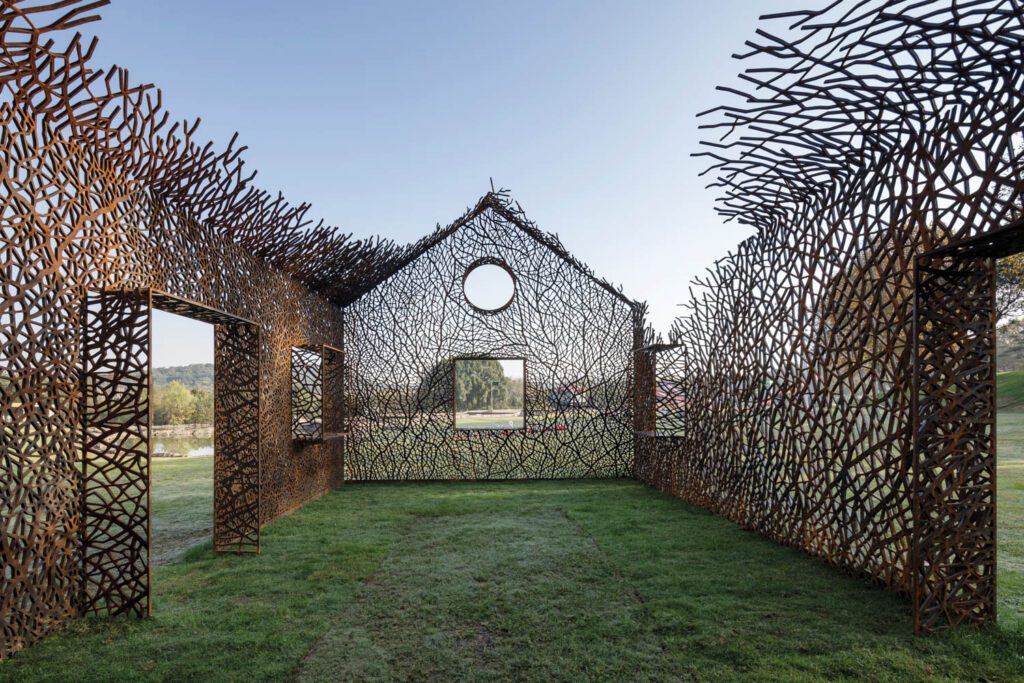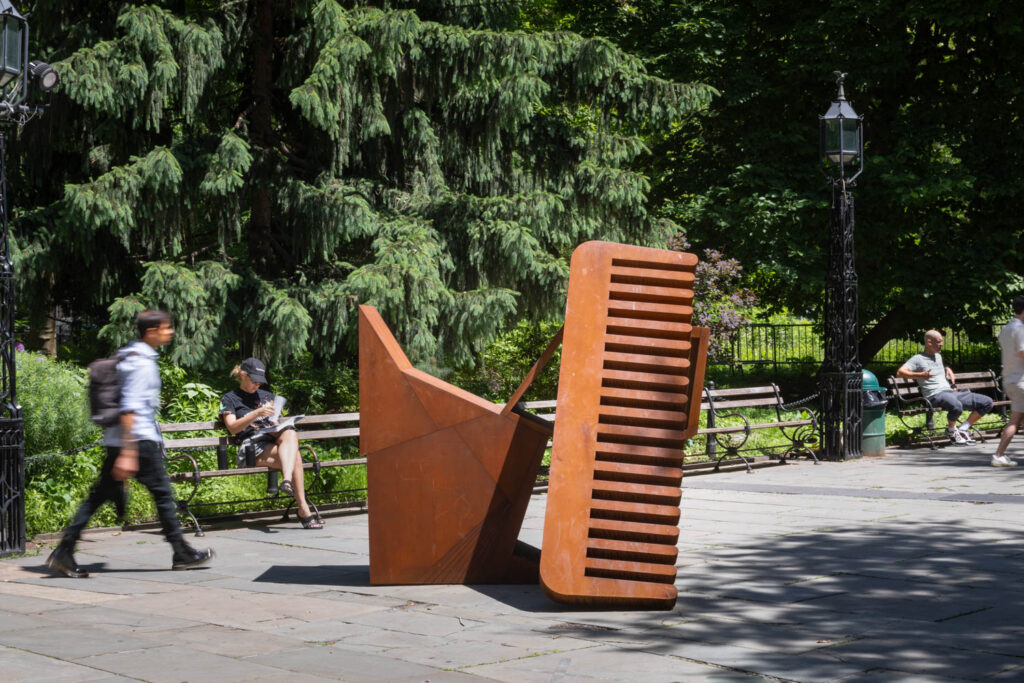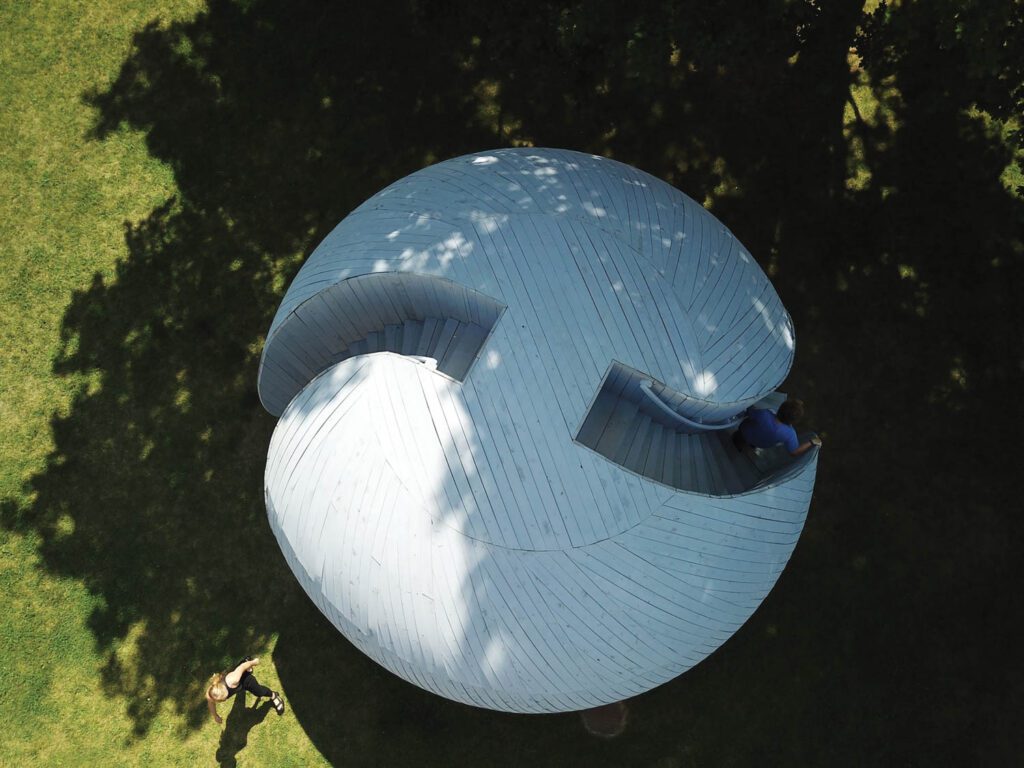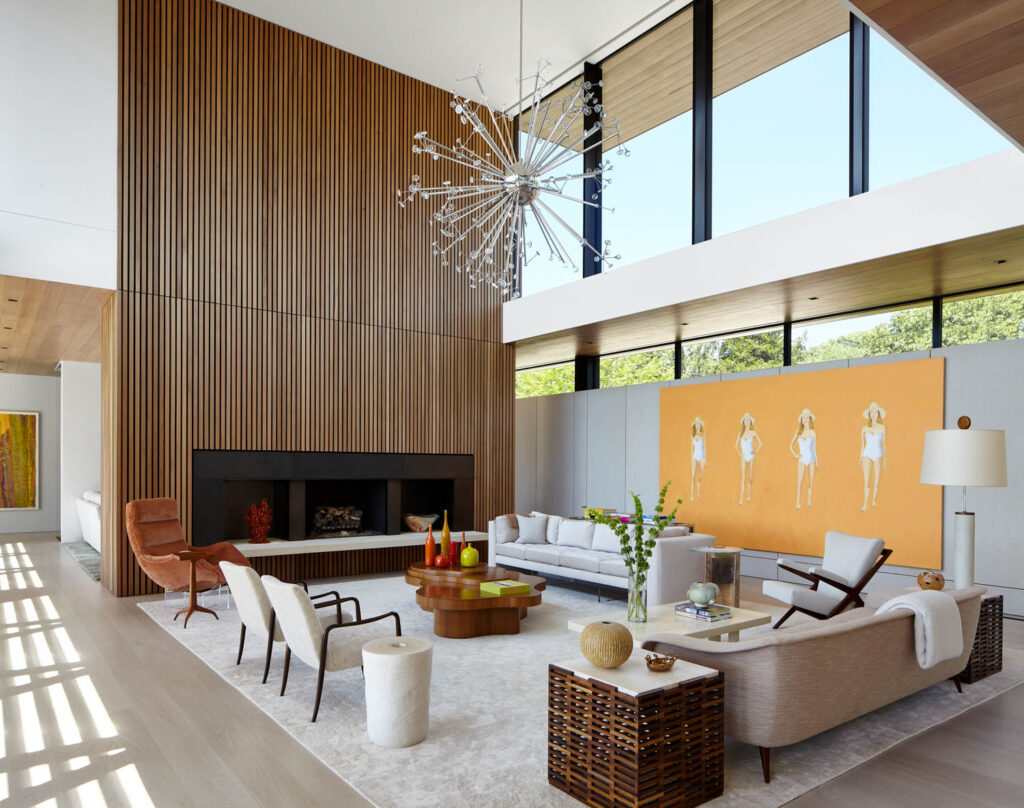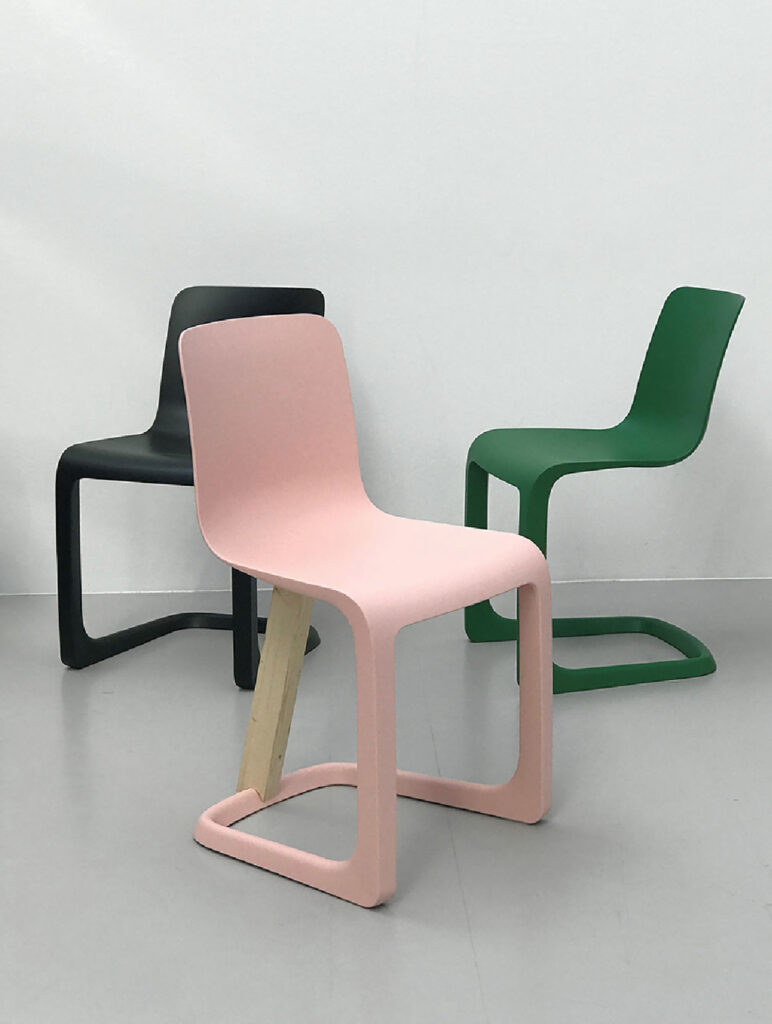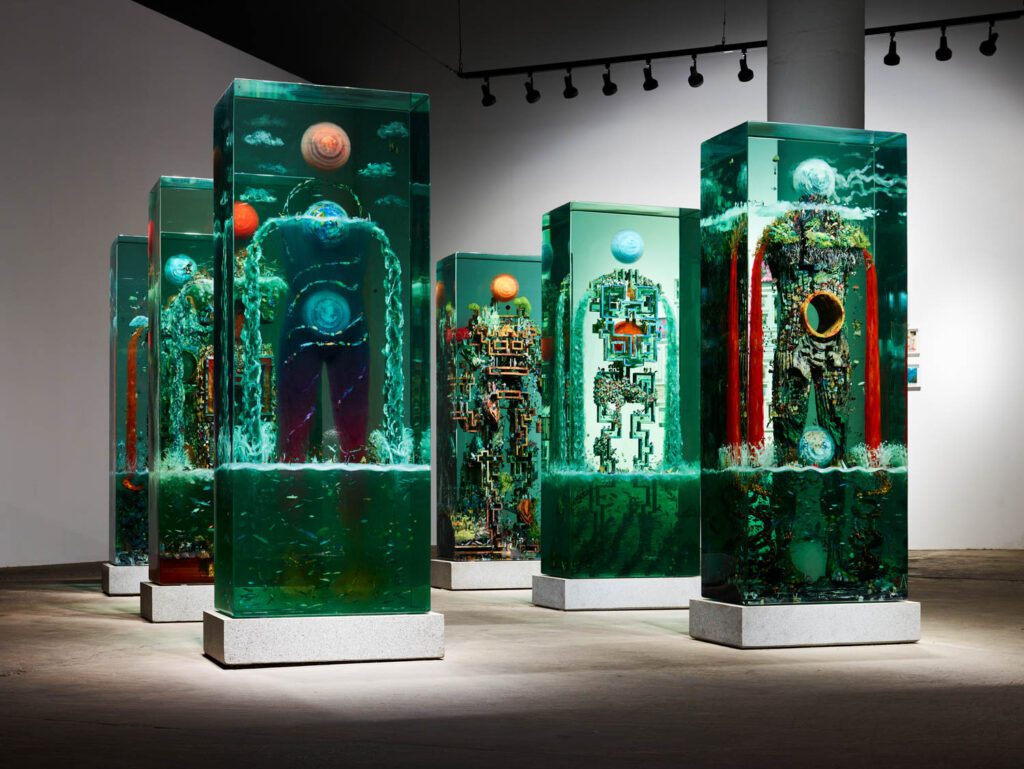
10 Questions With… Dustin Yellin
For some artists, a definitive relationship forms between their work and the neighborhood where it not only comes into fruition but blossoms. Such is the case with Dustin Yellin and the Red Hook area of Brooklyn. “The city is our great teacher, and it is for this reason that my door is always open to the street,” the artist tells Interior Design. “The threshold between the studio and the world is like a pore that expands with warmth and contracts in the cold—it is a reactive passage.” The serene Brooklyn neighborhood, which was once inhabited by fishermen, overlooks the intersection of downtown Manhattan and the Jersey shore and is now comprised of shipping yards and brownstone houses.
Yellin creates his glass sculptures, titled Psychogeographies, surrounded by the medley of natural and industrial vistas, merging intricacy of the hand with possibilities of technical advancements. Sandwiched between layers of vertical glass blocks as tall as six feet, the images invite viewers to move around moments frozen in time. Light plays an undeniable role in Yellin’s orchestration, creating an enthralling impact that bewilders the onlooker to linger and inspect the details.
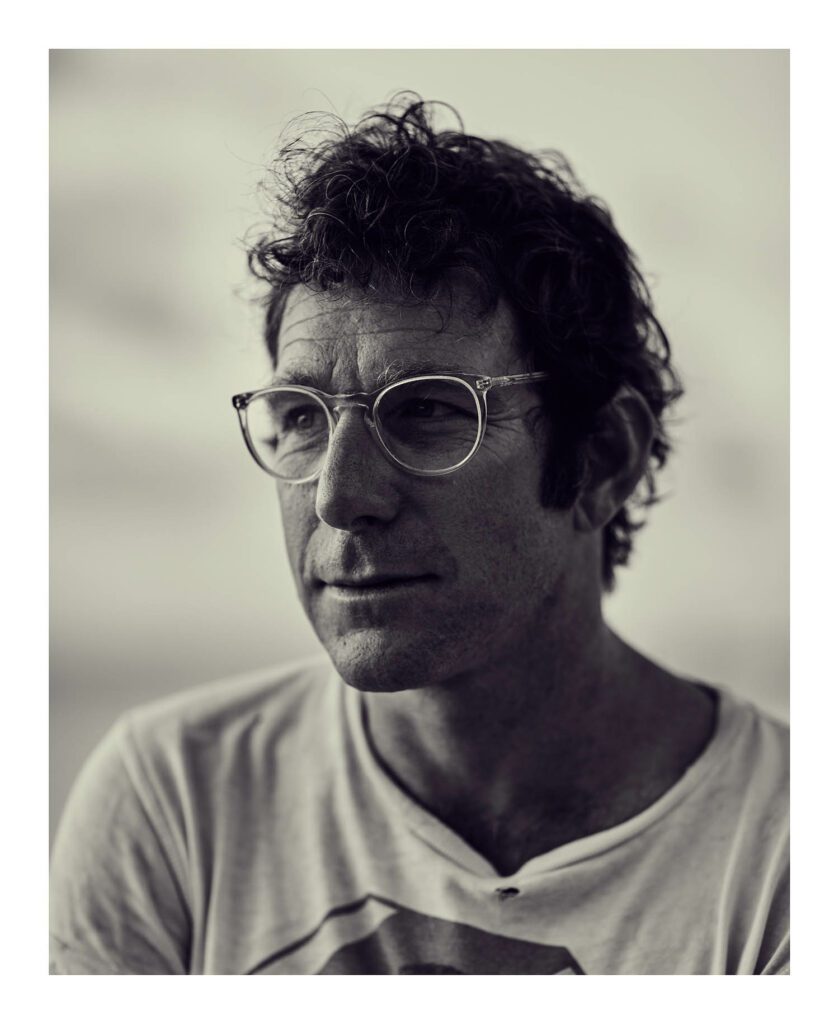
Inside the studio—a warehouse he renovated down the street from his multidisciplinary art center Pioneer Works—Yellin relies on natural light as well as Ketra lighting by Lutron, merging the day’s fluctuating hues with shades he can tune and control. “Like a fly caught in amber, my works act as a kind of time capsule,” he says. “Instead of hosting fossils, I embed human artifacts, typically images sourced from print media, within in such a way that we, as a species, become the specimen.”
Read Interior Design’s interview with Yellin about finding the right light and the performative aspect of his sculptures.
Interior Design: The invention of the moving image owes much to lighting. What role does light play in your idea of “frozen cinema,” in other words suspending an image to stillness?
Dustin Yellin: Goethe once said that “architecture is frozen music.” My use of the term “frozen cinema” is an update to his idea that through pattern, plan, and frame, an artist can breathe narrative into fixed forms. Like architecture, and unlike cinema, sculpture requests the observer to experience art through a body in motion in space and time, which is never constant. In a sense, I employ two forms of scenography; one that is pictorial, while the other relies on an active viewer who becomes their own director scripting encounters with the work in real space and in real time. I find that the difference between stillness and animation is really just a matter of time.
ID: Could you talk about your relationship with glass as a form of craft and a conceptual medium?
DY: Glass is a paradoxical medium; it is both strong and fragile while it also attempts to show itself and hide at the same time. Duchamp once said something to the effect that the best art exhibits an ambiguity of experience that is not one thing or the other, but is both one thing, and something else at the same time. To answer in the negative, the only thing I am against conceptually in art is the dichotomy between either/or states of being.
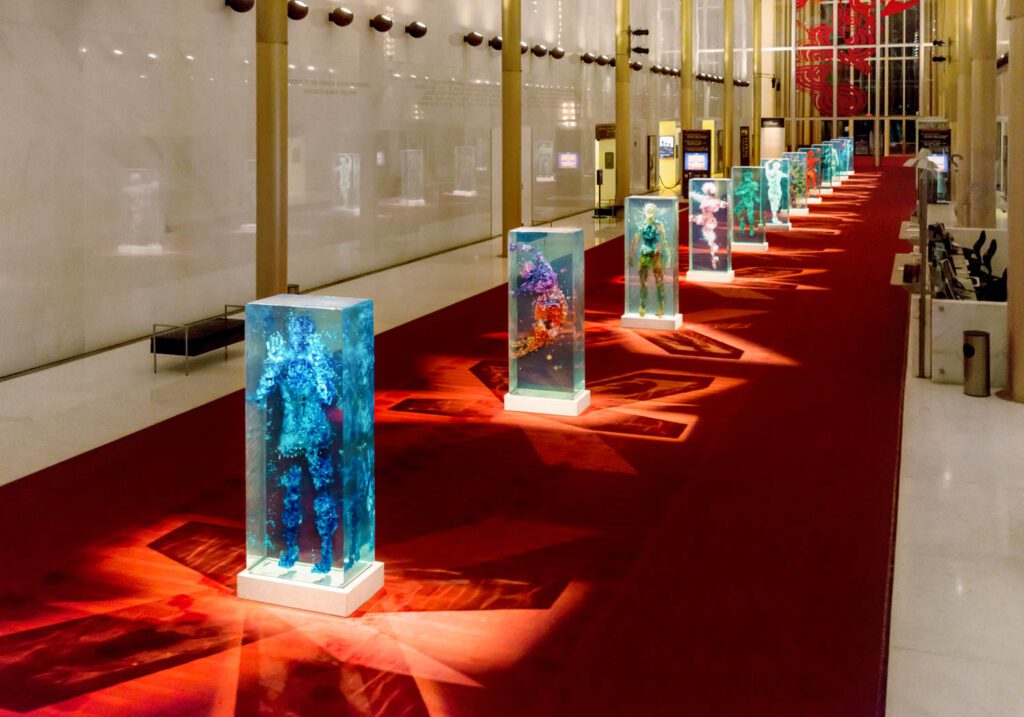
ID: Light, whether natural or artificial, is critical in an artist’s life in studio, one that even determines the artist’s use of the space. What is your relationship with light from conception of a work to its final form?
DY: All vision is predicated on light, and yet we often take light for granted. Glass by its very nature does something extortionary to all forms of light: it bends it. And while painting reflects light, glass acts as both a prism and a filter that makes legible how photons move around the work and around us. As an analog, my glass works are more like sensors that allow each viewer, and myself, to build sensitivity to the nature of light itself.
ID: Why is midday sunlight your favorite?
DY: Midday’s lack of shadows chips away at the object-hood of glass, transforming it into something more akin to an instrument, whether that be a window, a mirror, or a prism.
ID: Light lives through a constant shift through movement, similar to your sculptures that invite viewers to rotate around them. How do you orchestrate this sense of mobility for your audience?
DY: My works have different edge conditions that each provide different ways and moments of seeing the work. As sculpture exists in four dimensions, the act of the observer moving around and through these different conditions allows a suit of shifting views that merge, develop, and emerge yet again out of these situations and their borders. This movement allows the work to always be in a state of “becoming.”
ID: Exhibiting Psychogeographies in spaces associated with dance creates an interesting contrast between movement and stillness. Could you talk about your projects for Lincoln Center in New York and the Kennedy Center in Washington, D.C. through this aspect?
DY: There is an adage that the rests between notes give music its soul. Movement and stillness are already wed, just as darkness is to light. Each defines and clarifies the other; without one there cannot be the other. Jung mentioned that the human condition is one of duality, and that art is the expression par excellence of this reality.
ID: Psychogeographies consists of paintings and sculptures. How do you see these play with dimensionality?
DY: Since the Renaissance, Western art developed a form of painterly perspective based on foreshortening and geometry. The Modernists countered this illusion by flatlining the picture plane to assert the flatness of the canvas. Instead of seeing these two modes as antithetical, I mix both together so that the shift between each technique produces a “3rd depth”. As my works are three dimensional objects comprised ostensibly of sets of layered picture plains, I also move along the z-axis through these plains to provide a further play of depth through the relation between classical perspective and scale in real space.

ID: Scale is another critical element, almost similar to miniature art in which minuscule elements build a narrative altogether. Can you share a bit about your process of using small bits to form larger narratives?
DY: Each work is a microcosm in which the individual parts never lose their own unique identity. They also work together as a community of images to produce a larger systemic image at the same time.
ID: You create work-on-paper studies of your sculptures but also use paper bits inside the works. Could you talk about your relationship with paper?
DY: Since the beginning of time, people have made marks to record their existence. These marks endure and circulate long after as a collection of shared experience. There are many words for this greater body of knowledge, be it consciousness or culture. In a sense, I feel that I tap into this long conversation by sourcing other people’s marks, and then reconfiguring these items with mark-making of my own. By preserving these histories in glass, I can sustain that long conversation.
ID: Pioneer Works is a space that proves the multimedia direction art-making has evolved into in recent years. Many artists and designers refuse categorization of their practices. How do you see the center’s impact on your work and vice versa?
DY: Pioneer Works is a “museum of process” in which we support the continual development of all disciplines and practices through experimentation and production. I feel that as we support others, we advance ourselves. Pioneer Works is my life practice; they are one and the same.
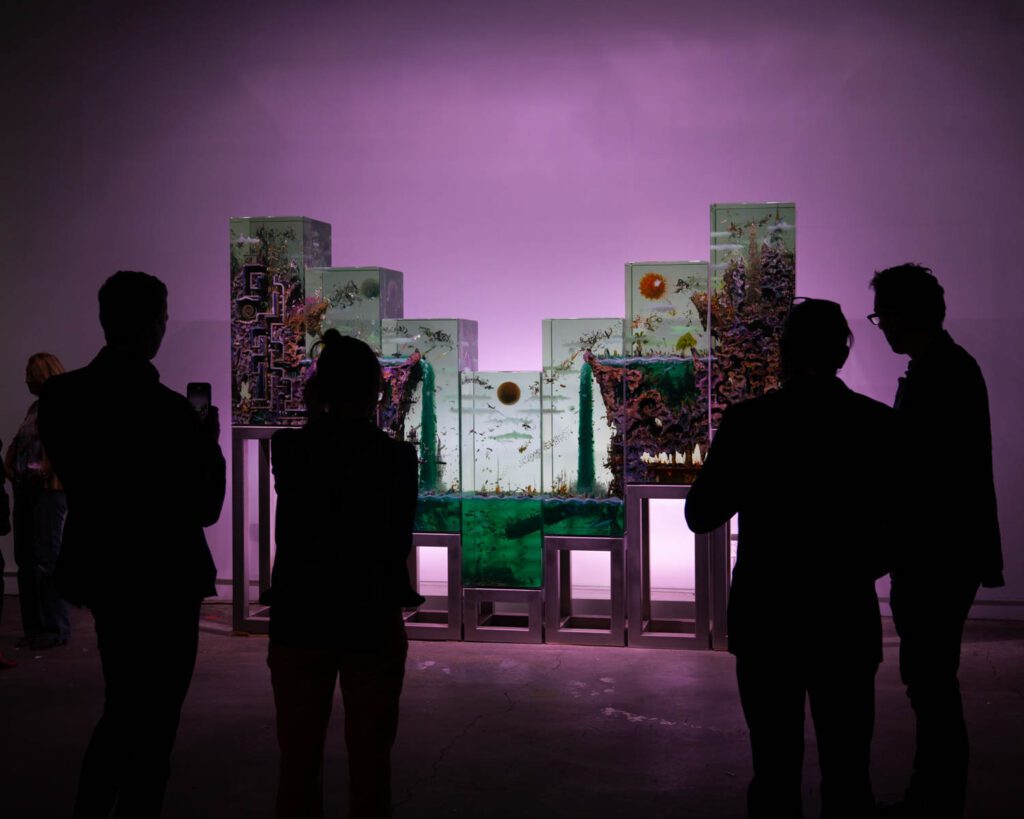

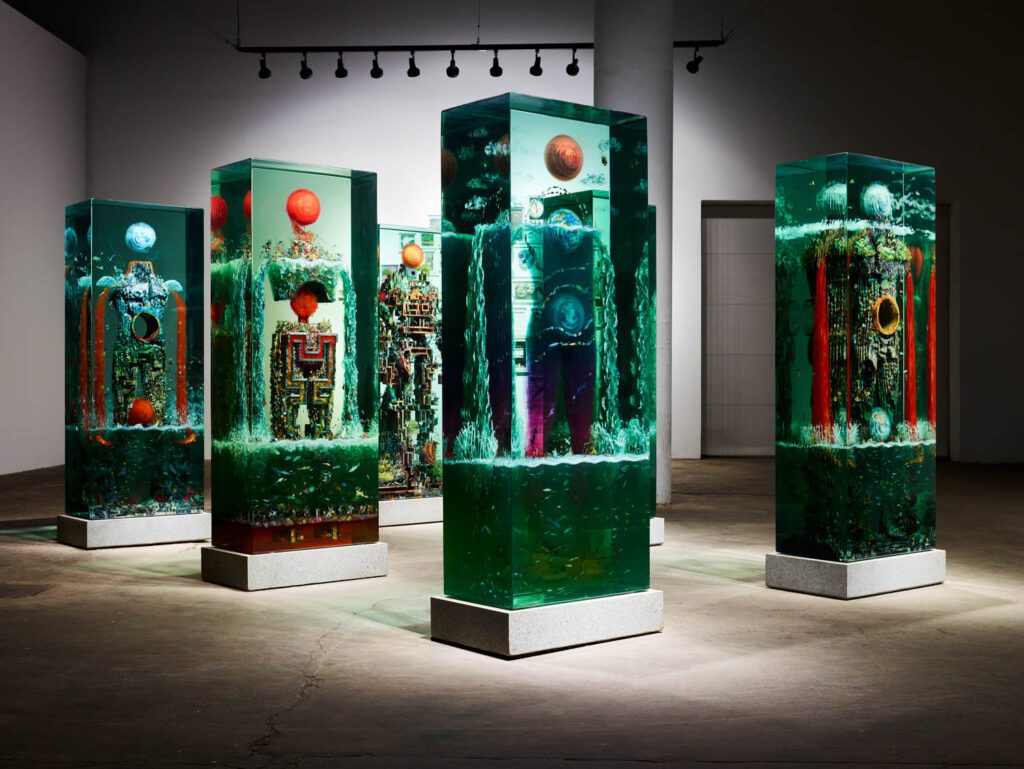
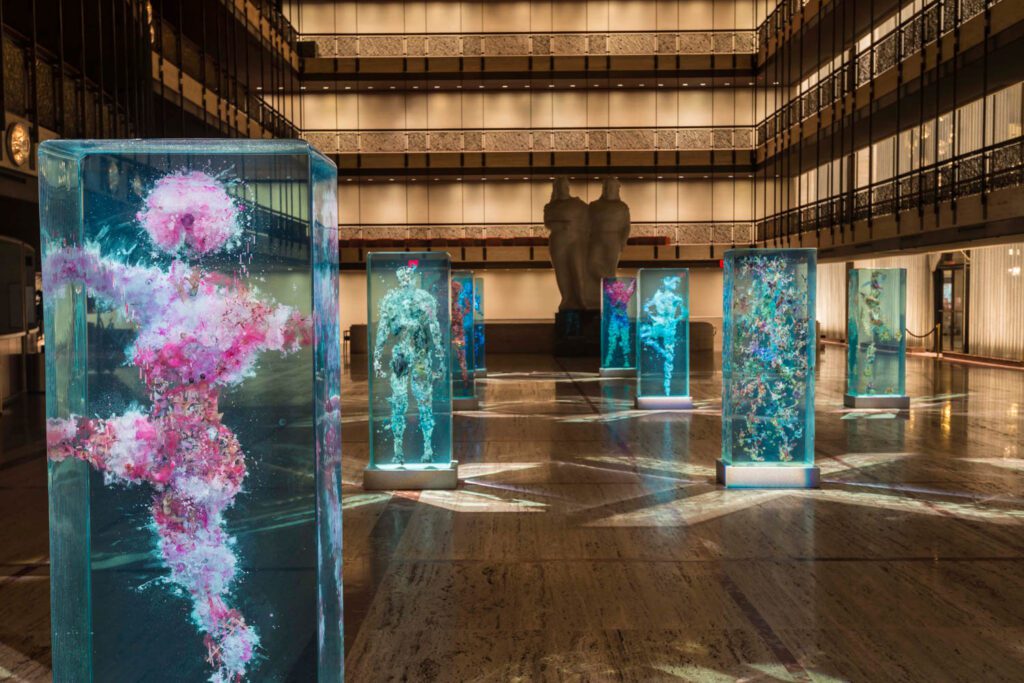
read more
DesignWire
Field Conforming Studio Creates a Sculptural Memorial to Home, Life, and Loss in China
Field Conforming Studio employs weathering steel for a sculptural memorial to home, life, and loss in central China.
DesignWire
Wyatt Kahn’s Mammoth Cor-Ten Sculptures Debut in Downtown Manhattan
“Wyatt Kahn: Life in the Abstract” represents the painter/sculptor’s first public-art exhibition and his first pieces in Cor-Ten steel.
DesignWire
Randi Renate Creates a Permanent Installation in Elizabethtown, New York
Inspired by the area’s High Peaks, Randi Renate creates a spherical permanent installation on the grounds of the Adirondack History Museum.
recent stories
DesignWire
Interior Design Hall of Fame Members: View by Year
From the past to the present, meet the celebrated names and trailblazers who have all been inducted into the Interior Design Hall of Fame.
DesignWire
10 Questions With… Damon Liss
Tribeca interior designer Damon Liss blends warmth and timeless flair with collectible vintage pieces to create thoughtful residential spaces.
DesignWire
Design Reads: A Closer Look at Jasper Morrison’s Work
Discover British designer Jasper Morrison’s wide range of furnishings, homes, and housewares in his cheeky retrospective “A Book of Things.”
